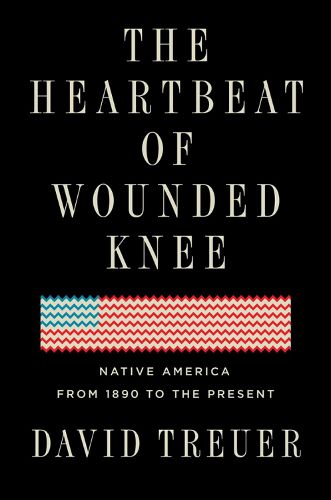Readings Newsletter
Become a Readings Member to make your shopping experience even easier.
Sign in or sign up for free!
You’re not far away from qualifying for FREE standard shipping within Australia
You’ve qualified for FREE standard shipping within Australia
The cart is loading…






Dee Brown’s 1970 Bury My Heart at Wounded Knee was the first truly popular book of Indian history ever published. But it promulgated the impression that American Indian history essentially ended with the 1890 massacre at Wounded Knee-that not only did one hundred fifty Sioux die at the hands of the U. S. Cavalry but Native civilization did as well.
Growing up Ojibwe on a reservation in Minnesota, training as an anthropologist, and researching Native life past and present for his nonfiction and novels, David Treuer uncovered a different narrative. Instead of disappearing, and despite-or perhaps because of-intense struggles to preserve their language, their culture, their very families, the story of American Indians since the end of the nineteenth century to the present is one of unprecedented growth and rebirth.
In The Heartbeat of Wounded Knee, Treuer melds history with reportage and memoir. Beginning with the tribes’ devastating loss of land and the forced assimilation of their children at government-run boarding schools, he shows how the period of greatest adversity also helped to incubate a unifying Native identity. He traces how conscription in the US military and the pull of urban life brought Indians into the mainstream and modern times, even as it steered the emerging shape of their self-rule and spawned a new generation of resistance. In addition, Treuer explores how advances in technology allowed burgeoning Indian populations across the continent to come together as never before, fostering a political force. Photographs, maps, and other visuals, from period advertisements to little-known historical photos, amplify the sense of accessing a fascinating and untold story.
The Heartbeat of Wounded Knee is an essential, intimate history-and counter-narrative-of a resilient people in a transformative era.
$9.00 standard shipping within Australia
FREE standard shipping within Australia for orders over $100.00
Express & International shipping calculated at checkout
Dee Brown’s 1970 Bury My Heart at Wounded Knee was the first truly popular book of Indian history ever published. But it promulgated the impression that American Indian history essentially ended with the 1890 massacre at Wounded Knee-that not only did one hundred fifty Sioux die at the hands of the U. S. Cavalry but Native civilization did as well.
Growing up Ojibwe on a reservation in Minnesota, training as an anthropologist, and researching Native life past and present for his nonfiction and novels, David Treuer uncovered a different narrative. Instead of disappearing, and despite-or perhaps because of-intense struggles to preserve their language, their culture, their very families, the story of American Indians since the end of the nineteenth century to the present is one of unprecedented growth and rebirth.
In The Heartbeat of Wounded Knee, Treuer melds history with reportage and memoir. Beginning with the tribes’ devastating loss of land and the forced assimilation of their children at government-run boarding schools, he shows how the period of greatest adversity also helped to incubate a unifying Native identity. He traces how conscription in the US military and the pull of urban life brought Indians into the mainstream and modern times, even as it steered the emerging shape of their self-rule and spawned a new generation of resistance. In addition, Treuer explores how advances in technology allowed burgeoning Indian populations across the continent to come together as never before, fostering a political force. Photographs, maps, and other visuals, from period advertisements to little-known historical photos, amplify the sense of accessing a fascinating and untold story.
The Heartbeat of Wounded Knee is an essential, intimate history-and counter-narrative-of a resilient people in a transformative era.